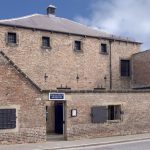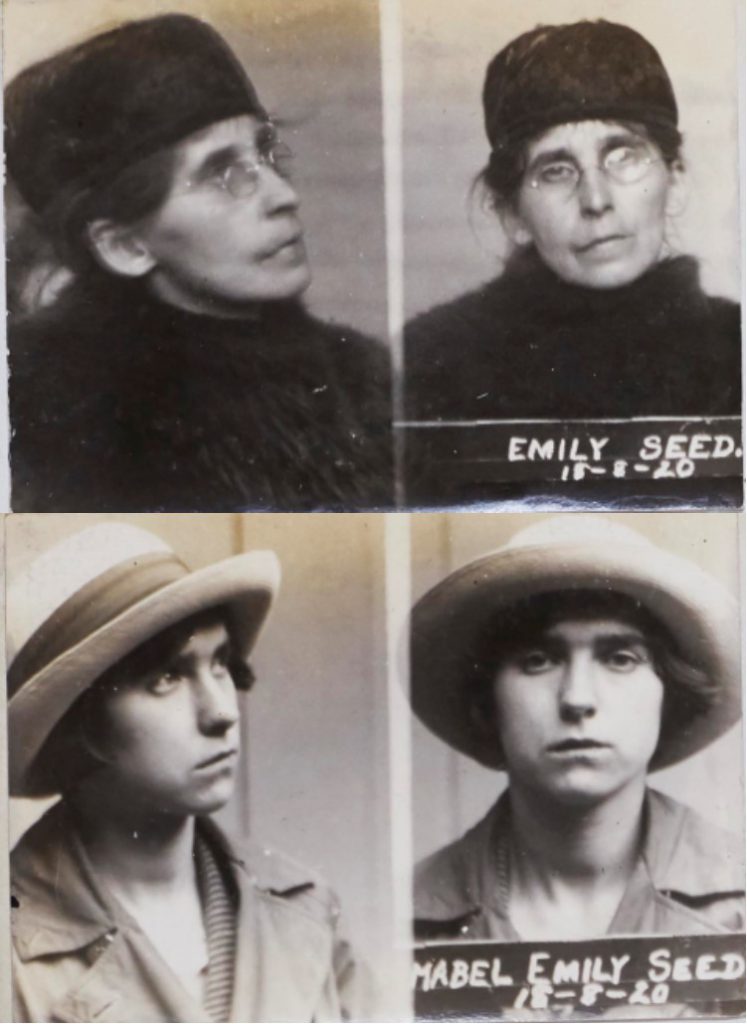Emily and Mabel Seed, mother and daughter, were arrested in 1920 in Scarborough for shoplifting. Their crime is recorded in a criminal record book created in Scarborough in the 1940s, held in the collections of Ripon Museums. The book is one of a series, recording every person arrested and charged in Scarborough, along with any previous convictions elsewhere, from the late 1800s to the 1940s.
Emily Seed was born in 1867 near Wakefield. She married Arthur Seed (born 1871) in 1895. Arthur was a successful agricultural merchant in Wakefield, and he had been born into a large well-known Wakefield family, the son of Briggs and Mary Seed, who had 11 children. In the 1911 census, Arthur and Emily are living in a four-bedroom house in Crigglestone, near Wakefield, with their three children: Wilfred Arthur (born 1887), a draughtsman; Mabel Emily (born 1901); and Harold (born 1894). Everything points to them being a successful, comfortable family.
Jumping forward in time to 1920, we find Emily and her daughter Mabel, now working as a clerk, arrested for shoplifting in Scarborough. They are charged with stealing shoes, gloves, jewellery, clothing and butter. The case was reported widely in the newspapers at the time. The newspapers reported that Emily and Mabel faced at least 20 charges for shoplifting, which they had committed during a week-long holiday to Scarborough. They had also committed further shoplifting offences in Leeds.
During their holiday to Scarborough, they had stolen a pair of shoes from Jackson’s Limited, butter from the Co-operative Stores, and a variety of clothing from a remnant warehouse. Detectives had been watching them and were convinced that they were shoplifters. When the police arrested them in Scarborough, they found the pair of shoes in a wicker basket – Emily tried to convince them were bought from a lady who was disappointed with them.
Upon arrest, Mabel Seed confessed to a “remarkable series of thefts” (Sheffield Daily Telegraph, August 1920). The pair were not granted bail, because it was felt that they would simply be arrested in another town for the same crime. Their solicitor pleaded for the magistrates not to imprison them as the shame they would face upon returning to Wakefield, where they were well-known, was punishment enough and Wakefield Police had testified to their excellent character. He called the case “inexplicable” but said that he could not describe it as a case of sudden temptation, suggesting that it was a pre-meditated crime (Yorkshire Post, August 1920). The chairman of the magistrates expressed regret at seeing two women of their position in circumstances of that kind and instead of imprisonment, they were fined £30 each, which was paid (Leeds Mercury, August 1920).
So what led these two women to steal in this way? It is very difficult to know, as we piece together fragments of their stories from the newspaper reports and other sources. It was reported in one newspaper that the marriage of Emily and Arthur had broken down and they had been living apart “for four or five years, owing to circumstances that were painful” (Yorkshire Post, August 1920). Could the women have been stealing to maintain the outward appearance of a wealthy lifestyle? Though they remained legally married, Emily and Arthur did not reconcile – in the 1939 register, Emily is listed as living with her children Mabel and Wilfred in Crigglestone. Both Emily and Mabel are listed as unpaid domestic servants, leaving Wilfred to support the household. Arthur is listed as living in Wakefield with his sister Martha, brother Walter and Winifred Seed (a younger relative).
Emily died in 1950, aged 83, and she left her estate to her daughter Mabel, recorded as a spinster. Her estate amounted to £831 6s 9d, which is equivalent to around £28,000 today. Mabel died in 1978, aged 77.
 Prison & Police Museum
Prison & Police Museum